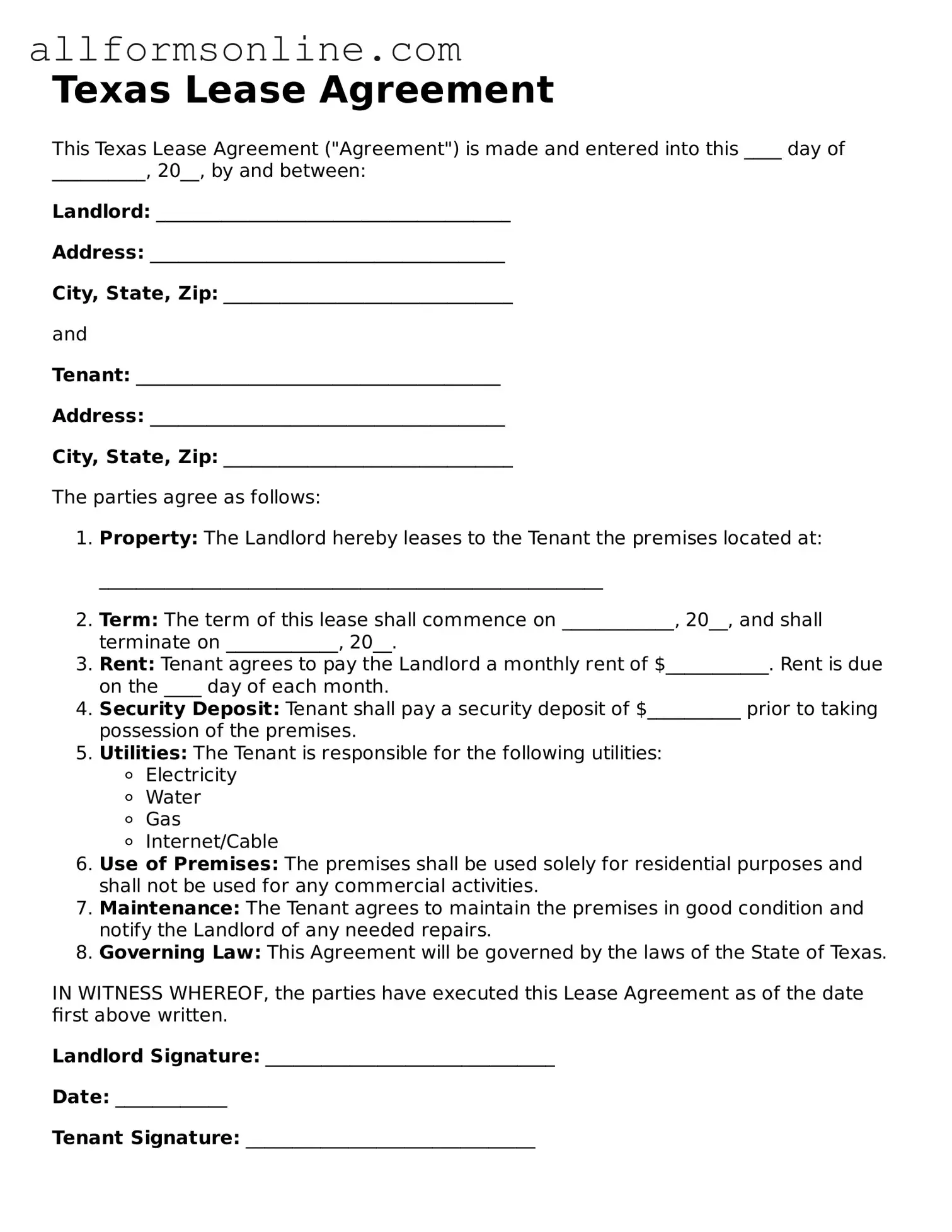What is a Texas Lease Agreement form?
A Texas Lease Agreement form is a legal document that outlines the terms and conditions under which a landlord rents property to a tenant in the state of Texas. This document typically includes details such as the rental amount, duration of the lease, responsibilities of both parties, and any rules or regulations that must be followed during the tenancy.
What information is typically included in a Texas Lease Agreement?
The Texas Lease Agreement generally includes the names of the landlord and tenant, the address of the rental property, the lease term (start and end dates), the amount of rent and payment due dates, security deposit requirements, maintenance responsibilities, and any specific rules regarding pets or smoking. It may also outline procedures for terminating the lease or handling disputes.
How long is a typical lease term in Texas?
Lease terms in Texas can vary widely. Common durations include month-to-month agreements, six-month leases, and year-long leases. The specific term should be clearly stated in the lease agreement. Tenants and landlords should consider their needs and circumstances when deciding on the length of the lease.
Are there any specific laws governing lease agreements in Texas?
Yes, Texas has specific laws that govern lease agreements. These laws address issues such as security deposits, eviction procedures, and tenant rights. It is important for both landlords and tenants to be aware of these regulations to ensure compliance and protect their rights throughout the rental process.
What should I do if I need to make changes to the lease agreement?
If changes are necessary, both parties must agree to the modifications. It is advisable to document any changes in writing, and both the landlord and tenant should sign the revised agreement. This ensures that all parties are aware of and agree to the new terms, reducing the potential for misunderstandings or disputes in the future.
